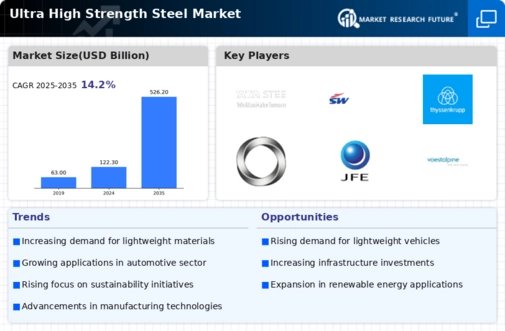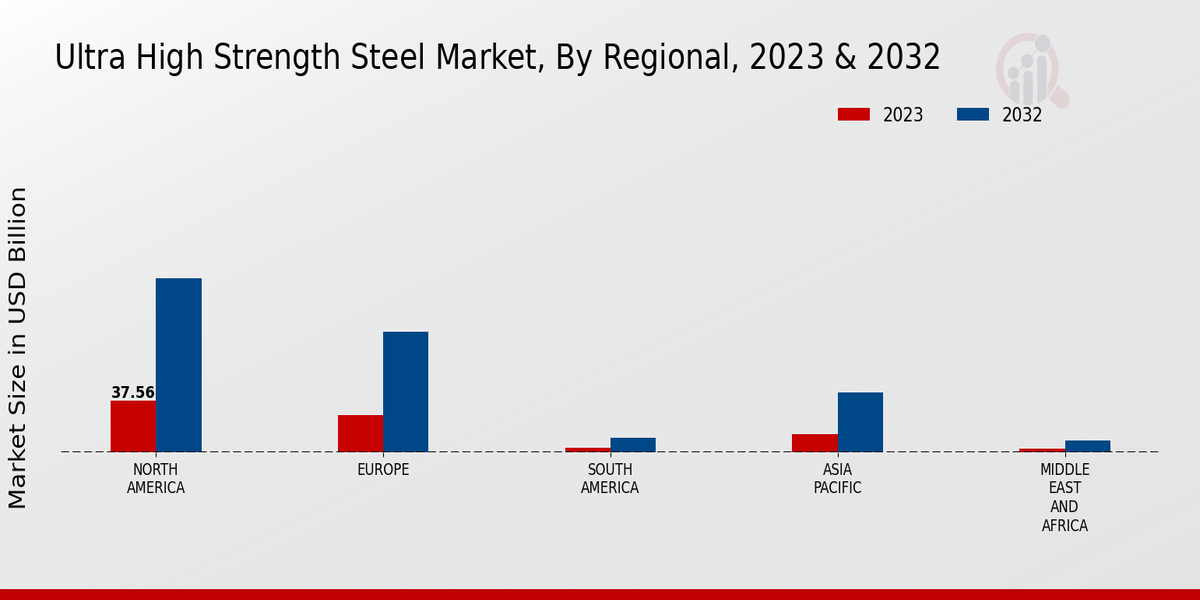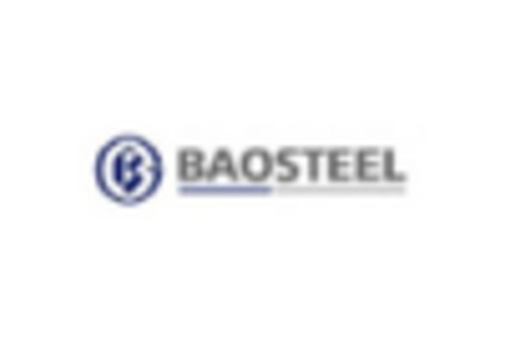Market Growth Projections
The Global Ultra High Strength Steel Market Industry is poised for substantial growth, with projections indicating a market value of 122.3 USD Billion in 2024 and an anticipated increase to 526.2 USD Billion by 2035. The compound annual growth rate of 14.18% from 2025 to 2035 underscores the robust demand for ultra high strength steel across various sectors, including automotive, construction, and aerospace. This growth trajectory reflects the material's versatility and its critical role in meeting the evolving demands of modern engineering and manufacturing.
Growing Environmental Concerns
Growing environmental concerns are reshaping the Global Ultra High Strength Steel Market Industry as industries seek sustainable alternatives to traditional materials. Ultra high strength steel offers a favorable environmental profile due to its recyclability and potential for reducing energy consumption in manufacturing processes. As companies strive to minimize their carbon footprint, the adoption of ultra high strength steel is likely to increase, aligning with global sustainability goals. This trend not only supports environmental initiatives but also positions ultra high strength steel as a key player in the transition towards greener manufacturing practices.
Rising Demand in Automotive Sector
The Global Ultra High Strength Steel Market Industry experiences a notable surge in demand from the automotive sector, driven by the need for lightweight materials that enhance fuel efficiency and safety. As automotive manufacturers increasingly adopt ultra high strength steel in vehicle production, the market is projected to reach 122.3 USD Billion in 2024. This shift is indicative of a broader trend towards sustainable manufacturing practices, where the integration of advanced materials like ultra high strength steel is essential for meeting stringent regulatory standards and consumer expectations for performance and safety.
Increased Focus on Safety Standards
The Global Ultra High Strength Steel Market Industry is influenced by an increased focus on safety standards across multiple sectors, particularly in automotive and construction. Stricter regulations regarding crash safety and structural integrity necessitate the use of materials that can withstand extreme conditions. Ultra high strength steel, known for its exceptional strength and energy absorption capabilities, is increasingly being utilized to meet these safety requirements. As industries prioritize compliance with safety regulations, the demand for ultra high strength steel is expected to rise, further solidifying its role in enhancing safety across various applications.
Infrastructure Development Initiatives
Infrastructure development initiatives across various regions contribute significantly to the Global Ultra High Strength Steel Market Industry. Governments are investing heavily in modernizing transportation networks, bridges, and buildings, which require materials that offer superior strength and durability. The use of ultra high strength steel in construction projects not only enhances structural integrity but also reduces overall material costs due to its strength-to-weight ratio. As urbanization accelerates, the demand for robust infrastructure solutions is expected to drive the market's growth, potentially leading to a market valuation of 526.2 USD Billion by 2035.
Technological Advancements in Steel Production
Technological advancements in steel production processes are pivotal for the Global Ultra High Strength Steel Market Industry. Innovations such as advanced alloying techniques and improved heat treatment processes enhance the mechanical properties of ultra high strength steel, making it more appealing for various applications. These advancements not only improve the performance characteristics of the steel but also optimize production efficiency, thereby reducing costs. As manufacturers adopt these technologies, the market is likely to witness a compound annual growth rate of 14.18% from 2025 to 2035, reflecting the growing preference for high-performance materials.














